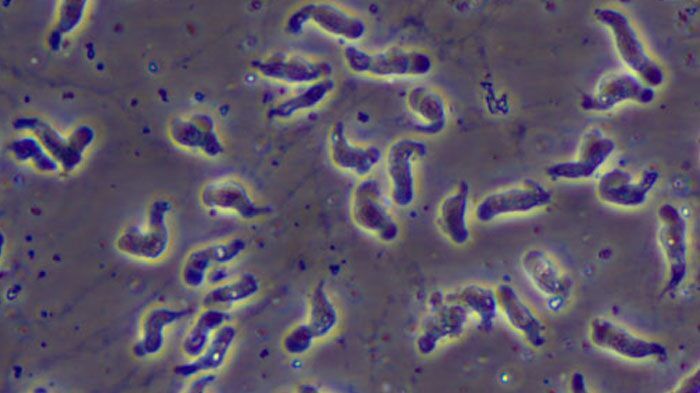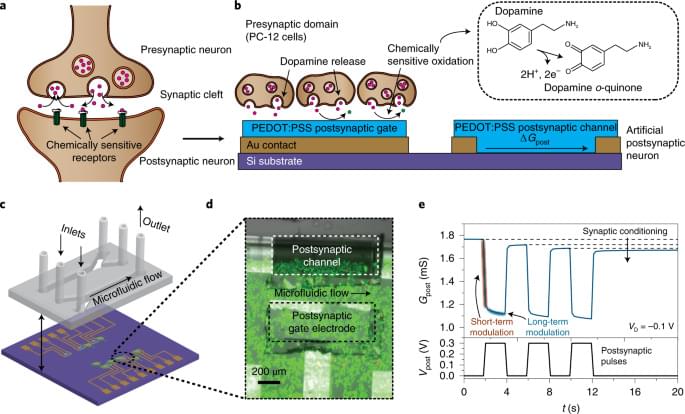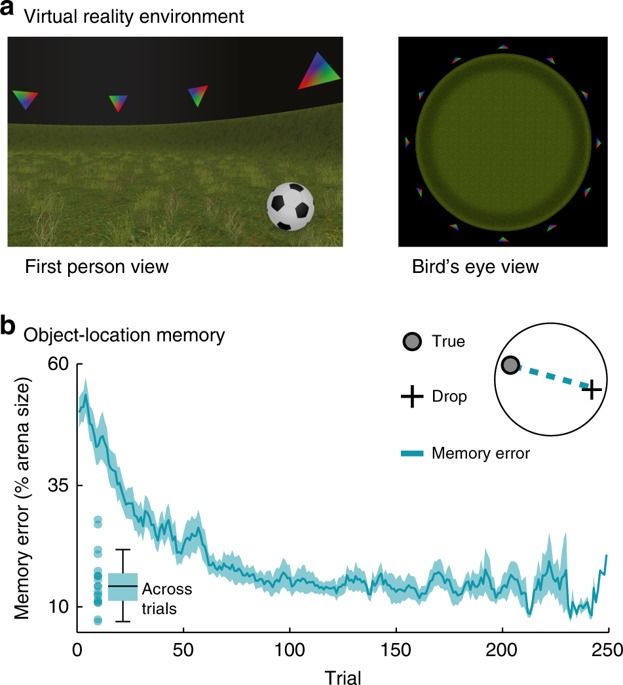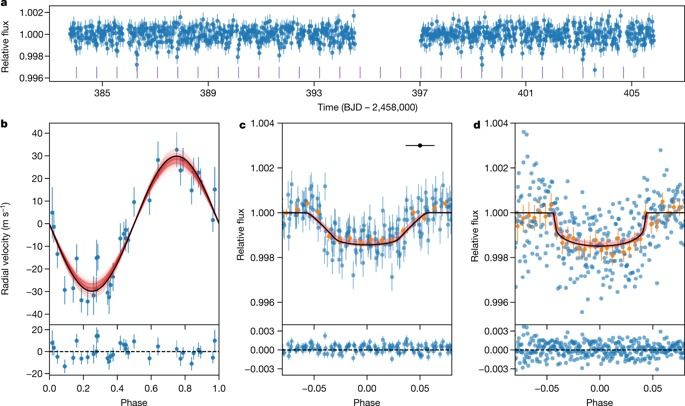Elon Musk giving SpaceX Tour — Falcon 1, Falcon 9 and Dragon #SpaceX #ElonMusk
Get the latest international news and world events from around the world.
Hubble’s Universe: Solar System Surprises
Hubble can see deep into space, but it’s also made amazing discoveries right here in our solar system! ☀️
Check out what Hubble has seen in our cosmic neighborhood over the past 30 years. Follow along over the next two days for more about Hubble’s fascinating universe.
#NASA #Hubble #video #solarsystem #planet #space #science #discovery #universe #astronomy
Why Was The Large Hadron Collider Built?
In the second episode of Q and A, here is why the large hadron collider built?

Rare brain-eating amoeba infection confirmed in Florida, health officials say
A person in Florida has been infected with a rare and usually deadly brain-eating amoeba, according to health officials.
The Florida Department of Health announced Friday that one patient in Hillsborough County has been infected with Naegleria fowleri, a water-borne, microscopic single-celled amoeba that attacks the brain.
“Infections can happen when contaminated water enters the body through the nose,” the health department said.
Tesla’s $20,000 Compact Car — Coming Soon After Tesla Battery Day Reveals New Batteries
Tesla is working on a compact car that will be manufactured in China and distributed worldwide. The battery technologies required for a compact car will be unveiled at Tesla Battery Day that will enable Tesla to make a small car for less than $25,000, possibly close to $20,000 or less. The battery cost is the main factor to drive down the cost of an electric vehicle. The compact car is coming soon after Tesla Battery Day technologies are revealed. The new batteries will allow Tesla to shrink the battery pack’s size while offering enough range for everyday driving. Elon Musk’s speech at the launch event in China suggests the car will be quite unique, just like the Cybertruck.
WATCH NEXT: https://youtu.be/3ni0T6yxJ_U
Concept photos: Dejan Hristov
——————-
► Support us on Patreon
https://www.patreon.com/evsource
► Check out EV Source Apparel & Merchandise
https://bit.ly/3805nYP
► Great Tesla Accessories
Get 10% off using code: EVSource
https://bit.ly/3ezPSJp
——————-
All music in this video is from Epidemic Sound.
Try them out with this free 30-day trial: https://bit.ly/2TOgbDx
——————-
► Join EV Source Discord:
https://discord.gg/MqUqaCx
——————-
CAMERA GEAR I USE:
US Links:
Luke Aikins No Parachute 25,000 Feet Airplane Jump Complete Video
Stride Gum Presents Heaven Sent
Luke Aikins, the first person to accomplish a planned jump out of an airplane without a parachute or wing suit from a very high altitude (25,000 feet) (7,620 meters). Aikins eventually lands in a net.
“Jumpers are away. Now he’s practicing the flip. That’s how he’ll have to land. He’ll have to land on his back. At 18,000 feet the oxygen mask will come off. There goes the oxygen mask. Now at 12,000 feet he’ll hear a beep in his helmet that will tell him he’s halfway home.”
The daring stunt is now in The Guinness Book Of World Records as the first complete planned jump from an airplane without a parachute: Luke Aikins.
Luke Aikins https://www.facebook.com/Luke-Aikins-998360006849439/
Luke Aikins https://en.wikipedia.org/wiki/Luke_Aikins
Luke Aikins http://www.today.com/news/skydiver-luke-aikins-sets-death-de…hy-t101382
Luke Aikins http://www.guinnessworldrecords.com/news/2016/8/guinness-wor…hou-438265
Mondelez International owns copyright of the complete video content and Univision approved this upload with YouTube on 7/30/2016. Thank you for allowing this video to be viewed on this YouTube channel.
Wingsuit Man lands sucessfully from 2400 feet with NO parachute
From Sky news feed: Gary Connery: stuntman completes 2400ft skydive without a parachute.

A biohybrid synapse with neurotransmitter-mediated plasticity
Brain-inspired computing paradigms have led to substantial advances in the automation of visual and linguistic tasks by emulating the distributed information processing of biological systems. The similarity between artificial neural networks (ANNs) and biological systems has inspired ANN implementation in biomedical interfaces including prosthetics and brain-machine interfaces. While promising, these implementations rely on software to run ANN algorithms. Ultimately, it is desirable to build hardware ANNs that can both directly interface with living tissue and adapt based on biofeedback. The first essential step towards biologically integrated neuromorphic systems is to achieve synaptic conditioning based on biochemical signalling activity. Here, we directly couple an organic neuromorphic device with dopaminergic cells to constitute a biohybrid synapse with neurotransmitter-mediated synaptic plasticity. By mimicking the dopamine recycling machinery of the synaptic cleft, we demonstrate both long-term conditioning and recovery of the synaptic weight, paving the way towards combining artificial neuromorphic systems with biological neural networks.

Behavior-dependent directional tuning in the human visual-navigation network
The brain derives cognitive maps from sensory experience that guide memory formation and behavior. Despite extensive efforts, it still remains unclear how the underlying population activity unfolds during spatial navigation and how it relates to memory performance. To examine these processes, we combined 7T-fMRI with a kernel-based encoding model of virtual navigation to map world-centered directional tuning across the human cortex. First, we present an in-depth analysis of directional tuning in visual, retrosplenial, parahippocampal and medial temporal cortices. Second, we show that tuning strength, width and topology of this directional code during memory-guided navigation depend on successful encoding of the environment. Finally, we show that participants’ locomotory state influences this tuning in sensory and mnemonic regions such as the hippocampus. We demonstrate a direct link between neural population tuning and human cognition, where high-level memory processing interacts with network-wide visuospatial coding in the service of behavior.

A remnant planetary core in the hot-Neptune desert
The interiors of giant planets remain poorly understood. Even for the planets in the Solar System, difficulties in observation lead to large uncertainties in the properties of planetary cores. Exoplanets that have undergone rare evolutionary processes provide a route to understanding planetary interiors. Planets found in and near the typically barren hot-Neptune ‘desert’1,2 (a region in mass–radius space that contains few planets) have proved to be particularly valuable in this regard. These planets include HD149026b3, which is thought to have an unusually massive core, and recent discoveries such as LTT9779b4 and NGTS-4b5, on which photoevaporation has removed a substantial part of their outer atmospheres. Here we report observations of the planet TOI-849b, which has a radius smaller than Neptune’s but an anomalously large mass of \(39.1{\,}_{-2.6}^{+2.7}\) Earth masses and a density of \(5.2{\,}_{-0.8}^{+0.7}\) grams per cubic centimetre, similar to Earth’s. Interior-structure models suggest that any gaseous envelope of pure hydrogen and helium consists of no more than \({3.9}_{-0.9}^{+0.8}\) per cent of the total planetary mass. The planet could have been a gas giant before undergoing extreme mass loss via thermal self-disruption or giant planet collisions, or it could have avoided substantial gas accretion, perhaps through gap opening or late formation6. Although photoevaporation rates cannot account for the mass loss required to reduce a Jupiter-like gas giant, they can remove a small (a few Earth masses) hydrogen and helium envelope on timescales of several billion years, implying that any remaining atmosphere on TOI-849b is likely to be enriched by water or other volatiles from the planetary interior. We conclude that TOI-849b is the remnant core of a giant planet.